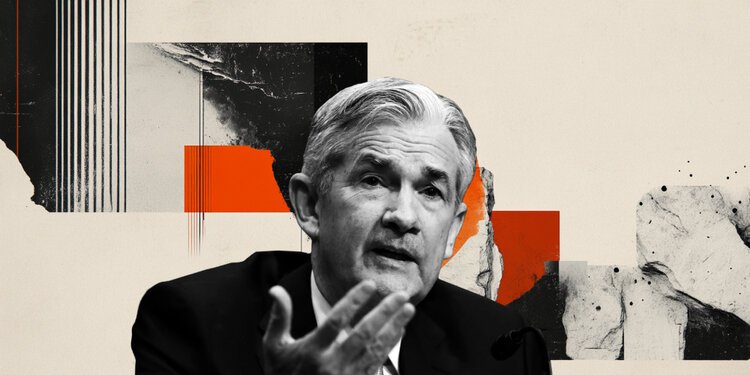Jerome Powell Speech Preview: Fed Chair address to Congress expected to influence market sentiment

Jerome Powell, Chairman of the United States (US) Federal Reserve (Fed), repeated that they do not need to be in a hurry to adjust the monetary policy in his prepared remarks for delivery on the first day of his testimony on the semi-annual Monetary Policy Report before the Senate Banking Committee.
Powell testimony key takeaways
“Policy is well-positioned to deal with risks, uncertainties.”
“We can maintain policy restraint for longer if economy remains strong and inflation does not move toward 2%.”
“We can ease policy if labor market unexpectedly weakens or inflation falls more quickly than expected.”
“The US is economy strong overall; inflation is closer to 2% goal but still somewhat elevated.”
“Fed’s framework review will not include a focus on inflation target, which will remain 2%.”
“Fed will wrap up framework review by late summer.”
“We are in a pretty good place with this economy.”
“Want to make more progress on inflation.”
“Don’t see any reason to be in a hurry.”
“We are not in recession.”
“Not for the Fed to comment on tariff policy”
“Clearly not allowed under the law for President to remove a Fed board member.”
“Would use quantitative easing only when rates are at zero.”
“Believe neutral rate has risen from very low pre-pandemic level.”
“A sharp increase in M2 might cause some inflation.”
This section below was published as a preview of Federal Reserve Chairman Jerome Powell’s testimony at 10:00 GMT.
- Jerome Powell’s testimony in the US Congress will be a top-tier market-moving event this week.
- New clues on the Federal Reserve interest rate path are awaited.
- US Dollar, stock markets and other asset classes could see big swings with the Fed Chair’s words.
Jerome Powell, Chairman of the United States (US) Federal Reserve (Fed), will deliver the Semi-Annual Monetary Policy Report and testify before the Senate Banking Committee on Tuesday. The hearing, entitled “The Semi-Annual Monetary Policy Report to the Congress,” will start at 15:00 GMT and it will have the full attention of all financial market players.
Jerome Powell is expected to address the main takeaways of the Fed’s Semi-Annual Federal Reserve Monetary Policy Report, published last Friday. In that report, the Fed noted that financial conditions continue to appear “somewhat restrictive” and reiterated that policymakers will weigh data when deciding on future policy moves.
In a long Q&A session, US representatives are expected to ask Powell about the interest rate path, inflation developments, and the economic outlook. They are also very likely to inquire about how US President Donald Trump’s policies could influence prices, growth prospects and the monetary policy moving forward.
The CME Group FedWatch Tool shows that markets price in a less-than-10% probability that the Fed will lower the policy rate by 25 basis points (bps) in March after the latest employment report reaffirmed tight conditions in the labor market.
In January, Nonfarm Payrolls (NFP) rose 143,000. Although this reading came in below the market expectation of 170,000, the US Bureau of Labor Statistics (BLS) announced upward revisions to previous NFP prints. “The change in total Nonfarm Payroll employment for November was revised up by 49,000, from +212,000 to +261,000, and the change for December was revised up by 51,000, from +256,000 to +307,000. With these revisions, employment in November and December combined is 100,000 higher than previously reported,” the BLS noted in its press release.
The market positioning suggests that the US Dollar (USD) has little room left on the upside even if Powell confirms that they will hold the policy unchanged in March. On the other hand, the USD could come under selling pressure in case Powell adopts an optimistic tone about the inflation outlook and leaves the door open for a rate reduction at the next policy meeting.
Interest rates FAQs
Interest rates are charged by financial institutions on loans to borrowers and are paid as interest to savers and depositors. They are influenced by base lending rates, which are set by central banks in response to changes in the economy. Central banks normally have a mandate to ensure price stability, which in most cases means targeting a core inflation rate of around 2%. If inflation falls below target the central bank may cut base lending rates, with a view to stimulating lending and boosting the economy. If inflation rises substantially above 2% it normally results in the central bank raising base lending rates in an attempt to lower inflation.
Higher interest rates generally help strengthen a country’s currency as they make it a more attractive place for global investors to park their money.
Higher interest rates overall weigh on the price of Gold because they increase the opportunity cost of holding Gold instead of investing in an interest-bearing asset or placing cash in the bank. If interest rates are high that usually pushes up the price of the US Dollar (USD), and since Gold is priced in Dollars, this has the effect of lowering the price of Gold.
The Fed funds rate is the overnight rate at which US banks lend to each other. It is the oft-quoted headline rate set by the Federal Reserve at its FOMC meetings. It is set as a range, for example 4.75%-5.00%, though the upper limit (in that case 5.00%) is the quoted figure. Market expectations for future Fed funds rate are tracked by the CME FedWatch tool, which shapes how many financial markets behave in anticipation of future Federal Reserve monetary policy decisions.
About Jerome Powell (via Federalreserve.gov)
“Jerome H. Powell first took office as Chair of the Board of Governors of the Federal Reserve System on February 5, 2018, for a four-year term. He was reappointed to the office and sworn in for a second four-year term on May 23, 2022. Mr. Powell also serves as Chairman of the Federal Open Market Committee, the System’s principal monetary policymaking body. Mr. Powell has served as a member of the Board of Governors since taking office on May 25, 2012, to fill an unexpired term. He was reappointed to the Board and sworn in on June 16, 2014, for a term ending January 31, 2028.”
Information on these pages contains forward-looking statements that involve risks and uncertainties. Markets and instruments profiled on this page are for informational purposes only and should not in any way come across as a recommendation to buy or sell in these assets. You should do your own thorough research before making any investment decisions. FXStreet does not in any way guarantee that this information is free from mistakes, errors, or material misstatements. It also does not guarantee that this information is of a timely nature. Investing in Open Markets involves a great deal of risk, including the loss of all or a portion of your investment, as well as emotional distress. All risks, losses and costs associated with investing, including total loss of principal, are your responsibility. The views and opinions expressed in this article are those of the authors and do not necessarily reflect the official policy or position of FXStreet nor its advertisers. The author will not be held responsible for information that is found at the end of links posted on this page.
If not otherwise explicitly mentioned in the body of the article, at the time of writing, the author has no position in any stock mentioned in this article and no business relationship with any company mentioned. The author has not received compensation for writing this article, other than from FXStreet.
FXStreet and the author do not provide personalized recommendations. The author makes no representations as to the accuracy, completeness, or suitability of this information. FXStreet and the author will not be liable for any errors, omissions or any losses, injuries or damages arising from this information and its display or use. Errors and omissions excepted.
The author and FXStreet are not registered investment advisors and nothing in this article is intended to be investment advice.




